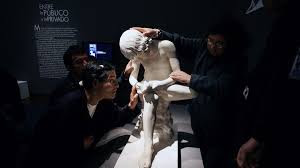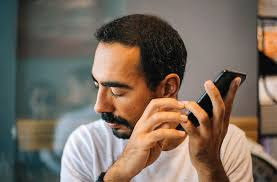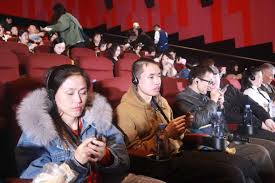CAN VISUALLY IMPAIRED WATCH MOVIES IN THREATERS & OTT PLATFORMS
CAN VISUALLY IMPAIRED WATCH MOVIES IN THREATERS & OTT PLATFORMS
 Snakes are known as chakshushrava which means snakes have the ability to hear from their eye, since they have not been gifted with external ears. However, this myth is dispelled and today researchers confirm that snakes have the ability to see and hear, but their senses work differently from those of humans. They have the ability to detect vibrations and sound waves as have specialized jawbones that pick up vibrations from the ground.
Snakes are known as chakshushrava which means snakes have the ability to hear from their eye, since they have not been gifted with external ears. However, this myth is dispelled and today researchers confirm that snakes have the ability to see and hear, but their senses work differently from those of humans. They have the ability to detect vibrations and sound waves as have specialized jawbones that pick up vibrations from the ground.
 It is not that blind people have zero visibility, most blind people have some level of vision, which may vary from from person to person. Some visually impaired may only see light while others may see blurry shapes, figures, or colors. People with total blindness cannot see anything.
It is not that blind people have zero visibility, most blind people have some level of vision, which may vary from from person to person. Some visually impaired may only see light while others may see blurry shapes, figures, or colors. People with total blindness cannot see anything.
There are also alternative ways blind people can see;
- Touch

- Sound

- Audio Description (AD)

- Braille

 In the 1980’s, the Media Access Group at WGBH, (public radio station at Boston) developed audio description for PBS (public broadcasting station). It was a game changer as they began releasing VHS (video home system) tapes of feature films that had audio description. Streaming platforms such as: Netflix, Disney Plus, Amazon Prime must make the movies accessible for the assistive technology to be available.
In the 1980’s, the Media Access Group at WGBH, (public radio station at Boston) developed audio description for PBS (public broadcasting station). It was a game changer as they began releasing VHS (video home system) tapes of feature films that had audio description. Streaming platforms such as: Netflix, Disney Plus, Amazon Prime must make the movies accessible for the assistive technology to be available.

People who are blind or visually impaired can use audio descriptions to have any nonverbal scenes described to them, when they visit the movie theater, they can ask for a transmitter and headphones that plays audio descriptions for them to understand the film. People who are blind usually like to hear movies as much as a sighted person likes to see and hear. As a person who is vision impaired, hearing is a substitute for eyesight. Listening is a great way of acquiring information about the world.
AD (Audio Description) is a separate audio track which provides a verbal description of all the visual elements of a movie. The describer only speaks when there are gaps in the dialogue, as it’s important not to miss any information you might obtain from what the characters are saying.

The descriptions enhance your understanding of the film by explaining all the visual elements which you would otherwise miss. This is particularly useful in action scenes. According to the American Council of the Blind, Audio description doesn’t only occur in cinemas. It can also be done in live theater, public events and art galleries, in addition to TV shows and DVDs. So the need of the hour is to make all cinemas/TV shows/OTT platforms inclusive by adding audio description to films for the benefit of persons with visual impairment.
 Adding AD – Audio-described movies have proven to be an important technique to help persons with blindness enjoy cinema. The audio description (also referred to as video description, or more precisely called visual description) is an additional narration track intended primarily for blind and visually impaired consumers of visual media (including television and film, dance, opera, and visual art).
Adding AD – Audio-described movies have proven to be an important technique to help persons with blindness enjoy cinema. The audio description (also referred to as video description, or more precisely called visual description) is an additional narration track intended primarily for blind and visually impaired consumers of visual media (including television and film, dance, opera, and visual art).
This service of narration is provided with no extra cost and those visually impaired can have an extraordinary experience of the presentation with descriptions of new scenes, the background settings, dresses, their body language which are generally pre recorded and synced according to the sound track of the movie.
India is a producer of large number of films in various languages but it is unfortunate that our film industry has not adopted AD movies may be perhaps because production of such films cost more in terms of both time and money.
Saksham, a Delhi based NGO along with UNESCO featured on 47th International Film Festival (IFFI) AD movies as a part of Accessible India Campaign. There is a need to make audio description mandatory for filmmakers so that cinema becomes an inclusive source of entertainment for persons with blindness and visual impairment.

– MAMTA SINGH SHUKLA
(ADVOCATE DELHI HIGH COURT)
MOBILE – 9560044035
Email id – adv.mamtasinghshukla@gmail.com
